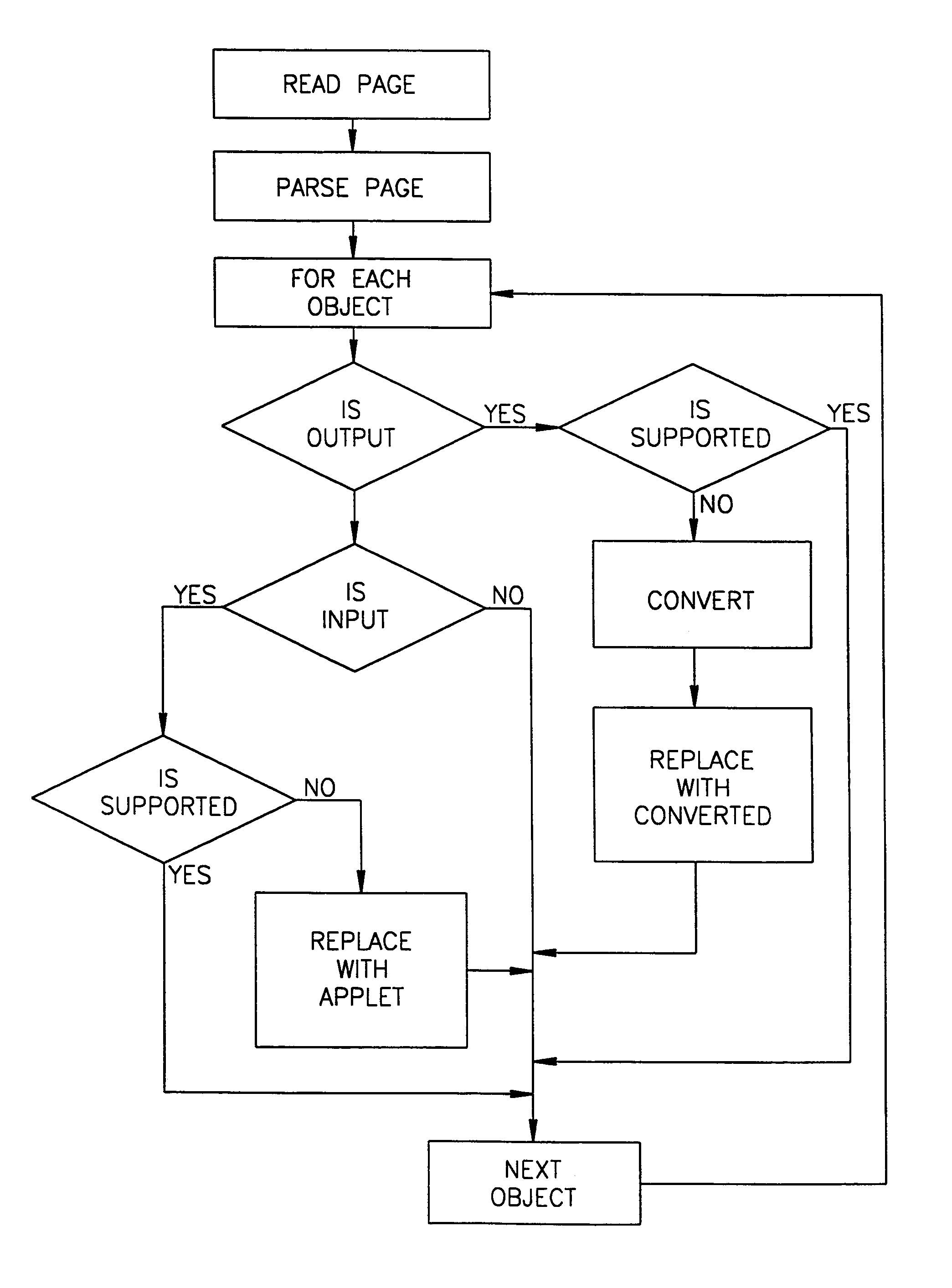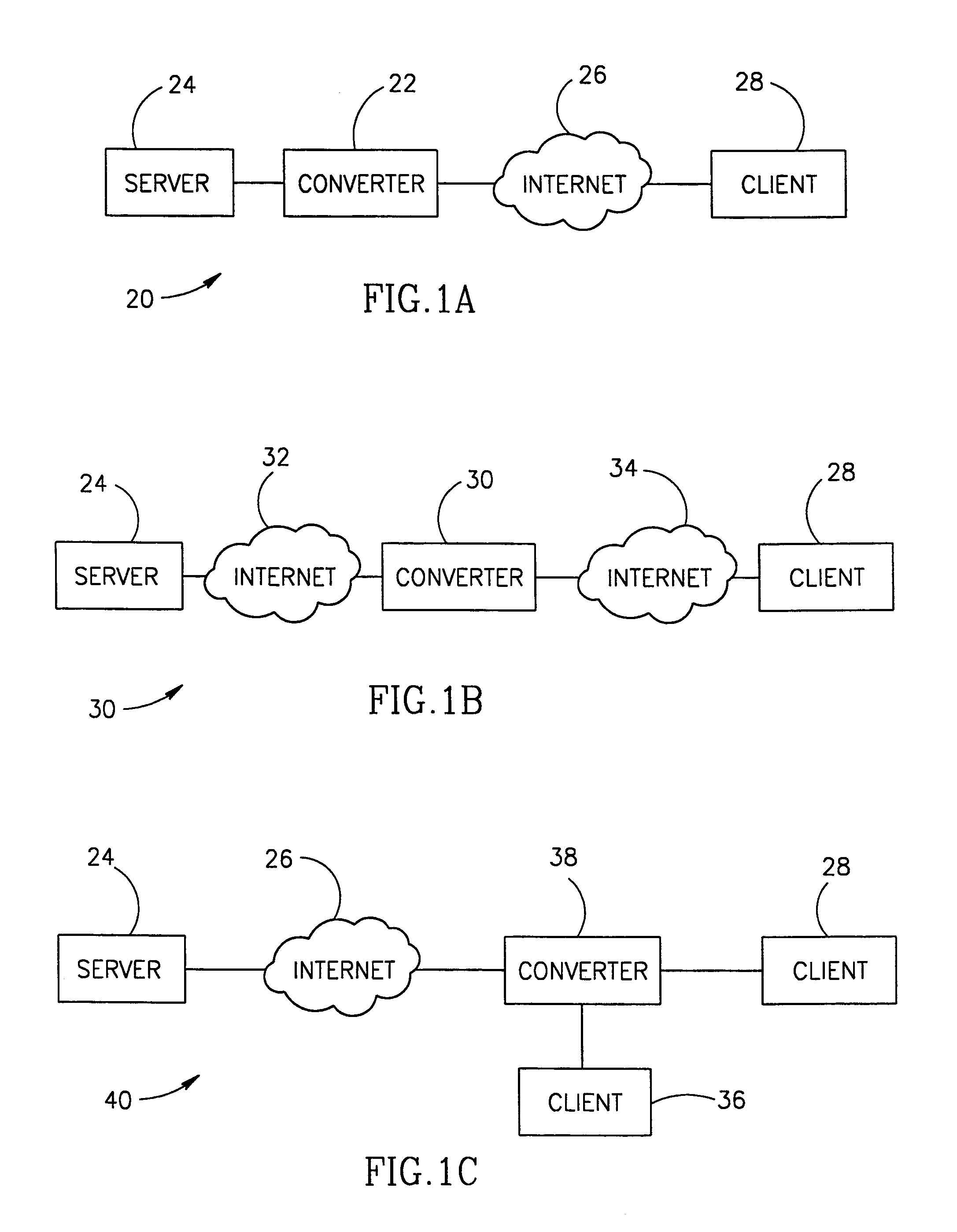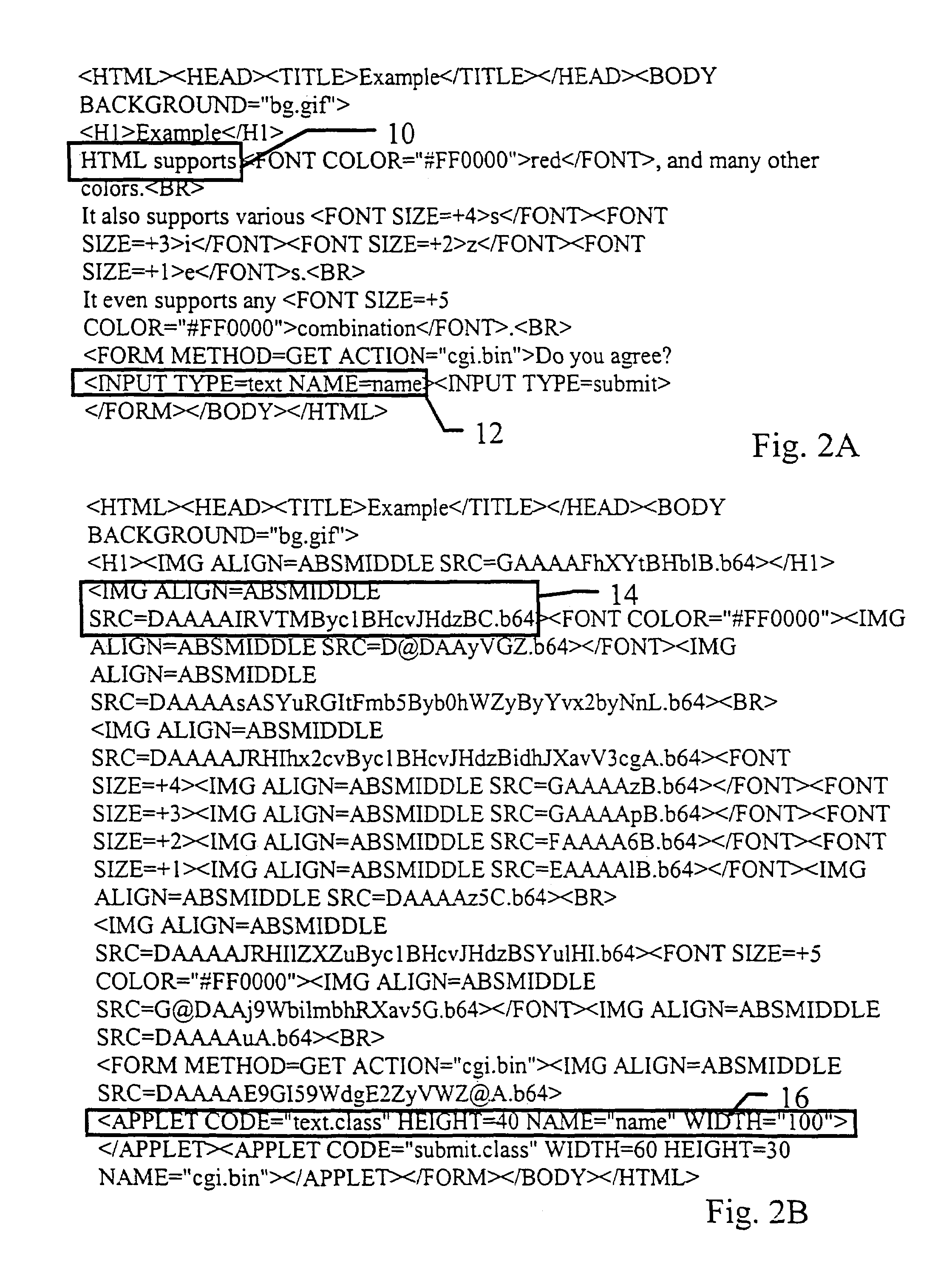Non-intrusive digital rights enforcement
a digital rights and non-intrusive technology, applied in the field of multilingual and multistandard communication, can solve the problems of not being able to enforce a single standard worldwide, the multi-lingual aspect of data transmitted in the expansion of the www, and the language limitations of users, so as to facilitate the resizing of text data, enhance caching, and increase the efficiency of cache systems
- Summary
- Abstract
- Description
- Claims
- Application Information
AI Technical Summary
Benefits of technology
Problems solved by technology
Method used
Image
Examples
Embodiment Construction
[0091]FIG. 1A shows a configuration 20 of an interconnection of a server 24 and an automatic converter 22, connected via an Internet 26 to a client 28, in accordance with a preferred embodiment of the present invention. As used herein, “Internet” includes also “Intranet” and “WWW” includes using the WWW tools and protocols on an Intranet. FIG. 2A shows a portion of an HTML file downloaded by client 28 from WWW server 24. A reference number 10 indicates a text output object to be displayed and a reference number 12 indicates an input request object. Displaying the HTML file at client 28 is usually performed using a browser. In a multi-lingual situation (where server 24 and client 28 do not support the same languages), it is entirely possible that client 28 is not capable of displaying text object 10, for example, for lack of a suitable font. In addition, it is even more usual that client 28 is not capable of performing the input request 12, for example, if the client does not have a ...
PUM
 Login to View More
Login to View More Abstract
Description
Claims
Application Information
 Login to View More
Login to View More - R&D
- Intellectual Property
- Life Sciences
- Materials
- Tech Scout
- Unparalleled Data Quality
- Higher Quality Content
- 60% Fewer Hallucinations
Browse by: Latest US Patents, China's latest patents, Technical Efficacy Thesaurus, Application Domain, Technology Topic, Popular Technical Reports.
© 2025 PatSnap. All rights reserved.Legal|Privacy policy|Modern Slavery Act Transparency Statement|Sitemap|About US| Contact US: help@patsnap.com



